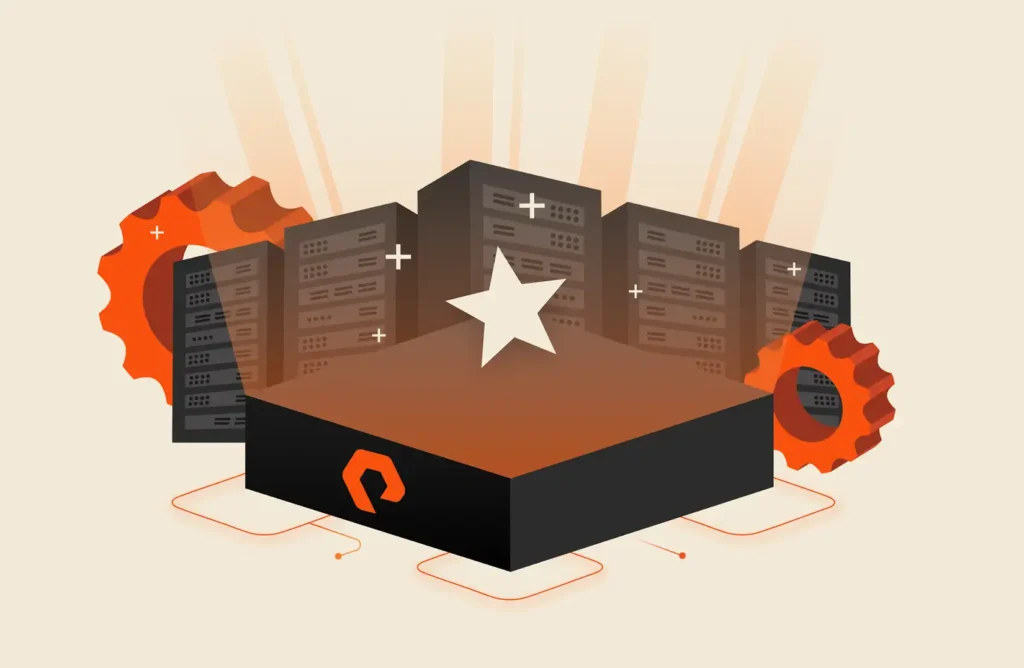Summary
With the advent of the software-defined vehicle, automakers could find themselves getting left behind if they can’t succeed at software development.
Let’s start with a bold quote: “Once, software was a part of the car. Now, software determines the value of a car. The success of a car depends on its software much more than the mechanical side.”
This was said by Manfred Broy, emeritus professor of informatics at Technical University, Munich, and is conveyed in a terrific Motor Trend publication and documentary called “Coding the Car,” which I highly recommend to anyone interested in automotive. (All quotes and statistics in this blog unless otherwise noted are from this publication.)
Broy’s statement upends the history of automaking, which for so long was about car style, bending metal, and engine power. With the advent of the software-defined vehicle (SDV), the stakes have changed forever.

FlashBlade//EXA
Experience the World’s Most Powerful Data Storage Platform for AI
What Are the Advantages of Software-defined Vehicles?
Current automobiles are described as “smartphones on wheels,” and the evidence is compelling. According to Motor Trend, a typical new car has over 150 million lines of code and 25GB an hour of data flowing through its systems. There are over 1,500 wires totaling over 5,000 meters (three miles) in length.
Cars are capable of over-the-air (OTA) software updates, which can add new capabilities as well as fix problems. Even some hardware problems are fixable with a remote update, alleviating the need to visit the repair shop. And the SDV is future-ready. Scott Miller, VP of Software Defined Vehicle and Operating System at General Motors, notes: “We don’t even know what features will be created in the future, but the opportunity to customize [the software-defined vehicle], add new features and add services is going to be orders of magnitude more than anything we’ve seen before.”
What Are the Threats Facing the Automobile Industry?
The industry as a whole has a bright future. But any given automaker may find themselves falling behind if they can’t succeed at developing software. The challenges are enormous because automakers deal with stringent safety factors and a vast number of third-party components that they don’t always control but need to be integrated.
To help alleviate these automotive industry challenges, automakers are building their own, internal platforms. For example, Stellantis announced its software platform called STLA Brain (pronounced “Stella Brain”) which will run across its car brands. STLA Brain will make it easier to roll out revenue-generating services such as performance-on-demand and location services that can connect to retail or food delivery services.
General Motors has Ultifi, an end-to-end vehicle software platform and operating system that can be compared to Android or iOS. The platform allows developers to abstract new services from the underlying hardware, allowing for faster service delivery. Continual feedback loops from users will also allow fine-tuning and better understanding of what services are being consumed.
What Are the Biggest Disruptors in the Automotive Industry?
Automotive software development is becoming increasingly difficult. Motor Trend notes, “Software complexity in vehicles is rapidly outpacing the ability to both develop and maintain it… Car makers and suppliers alike are struggling to close the development-productivity gap.”
The clear path forward for automotive software is containers, microservices, and CI/CD pipelines. The challenge for legacy automakers is breaking away from old ways of doing things and monolithic data structures. Startup car makers have a software development advantage because they aren’t dealing with decades of technical debt.
Legacy automakers aren’t sitting still. Ford has embraced containers and is leveraging Portworx® by Pure Storage to help their journey to true platform engineering. In an interview with The Cube, Satish Puranam, Technical Lead & Manager – Cloud, at Ford, noted, “At the end of the day, what we are talking about is enablement of developers and velocity of delivering services, at a particular price point and at a particular quality.”
A key part of the answer is storage because Ford’s development efforts rely on persistent storage. Puranam notes, “Storage is the key integral part and there’s hardly anything we can do in Kubernetes without having storage.” Portworx simplifies Kubernetes for the IT infrastructure team by delivering services such as high availability, DR, and backup, and for developers through self-service and integrated data services.
The ultimate goal is a smooth road for both developers and IT and for Kubernetes infrastructure to be “boring.” Puranam explains, “Once you make the underpinnings boring, you can make value on top of it exciting.” Boring is the new easy!
The Value of High-performance Code Repositories
As the size of automotive development code bases grows, generating binary packages and other operations in the CI/CD pipeline are becoming performance bottlenecks, slowing down development. Code repositories like JFrog Artifactory and Perforce Helix need high-performance storage that can handle the parallel processing of multiple operations and support hundreds of developers accessing objects simultaneously.
FlashBlade® is the ideal platform for code repositories. With massive parallel bandwidth and native support for both file and object protocols, FlashBlade lets you accelerate software development processes and simplify administration and scaling by separating storage from compute. FlashBlade comes in two flavors: the ultra-high performance FlashBlade//S™ to drive primary workloads, and the capacity-optimized FlashBlade//E™ which offers a more efficient alternative to disk-based file and object repositories that are “cold” or less frequently accessed.
Pure Storage further helps accelerate operations with its unique RapidFile Toolkit, a direct replacement for multiple Linux file commands such as listing, copying, or changing permissions on files. RapidFile Toolkit is up to 20 times faster than traditional commands and works with any Linux filesystems, not just those on FlashBlade.
What Will the Automotive Industry Look Like in 2030?
It’s always difficult to predict where an industry is headed when you’re at an inflection point, and the software-defined vehicle is precisely that. Ed Loh, Head of Editorial at Motor Trend, refers to “the enormity of the transition going on in the automotive industry and how much it is about to rock our world,” calling this a time of “massive change and disruption.”
At the same time, previously predicted trends may not play out, such as the shift to electric vehicles (EVs). Consumer interest in EVs may have peaked, at least temporarily, and OEMs are pushing back transition timelines and investments. A few years ago, most industry analysts saw EV growth as unstoppable.
But the software-defined vehicle is here to stay as software now dominates internal combustion engine vehicles as well as EVs. There’s no going back on this trend.
We started this blog with a bold statement, so let’s end it with one. Zack Hicks, CEO and President of Toyota Connected, North America, provides the perfect conclusion:
“I think our customers know exactly what a good experience with software should be, and they are the ones that are pushing us and the industry to make it better… I think we’re the ones that had to step up and deliver on those expectations. In the early days of connected-vehicle technology, we were all saying this will be great in four years when we do our next iteration. But every day on my mobile device, I’m getting new, great experiences. We had to get to that point, and that’s what we’re doing. We’re finally stepping up to the customers’ expectations.”
Learn more about automotive data solutions from Pure Storage.
A Smooth Road Forward
See why Pure Storage is the right partner for your data journey.







